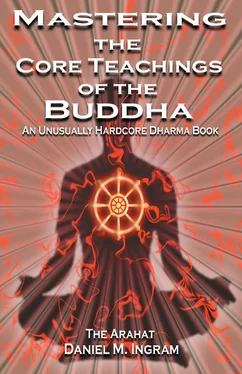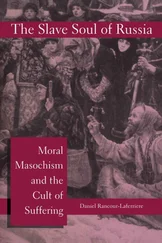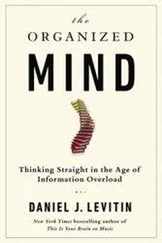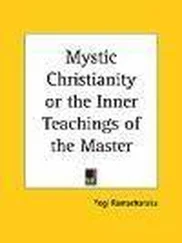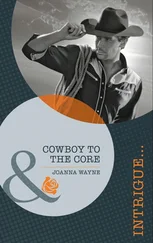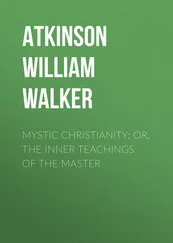Daniel Ingram - Mastering the Core Teachings of Buddha - An Unusually Hardcore Dharma Book
Здесь есть возможность читать онлайн «Daniel Ingram - Mastering the Core Teachings of Buddha - An Unusually Hardcore Dharma Book» весь текст электронной книги совершенно бесплатно (целиком полную версию без сокращений). В некоторых случаях можно слушать аудио, скачать через торрент в формате fb2 и присутствует краткое содержание. Год выпуска: 2009, ISBN: 2009, Издательство: Aeon Books, Жанр: Старинная литература, на русском языке. Описание произведения, (предисловие) а так же отзывы посетителей доступны на портале библиотеки ЛибКат.
- Название:Mastering the Core Teachings of Buddha - An Unusually Hardcore Dharma Book
- Автор:
- Издательство:Aeon Books
- Жанр:
- Год:2009
- ISBN:9781904658405
- Рейтинг книги:5 / 5. Голосов: 1
-
Избранное:Добавить в избранное
- Отзывы:
-
Ваша оценка:
- 100
- 1
- 2
- 3
- 4
- 5
Mastering the Core Teachings of Buddha - An Unusually Hardcore Dharma Book: краткое содержание, описание и аннотация
Предлагаем к чтению аннотацию, описание, краткое содержание или предисловие (зависит от того, что написал сам автор книги «Mastering the Core Teachings of Buddha - An Unusually Hardcore Dharma Book»). Если вы не нашли необходимую информацию о книге — напишите в комментариях, мы постараемся отыскать её.
Mastering the Core Teachings of Buddha - An Unusually Hardcore Dharma Book — читать онлайн бесплатно полную книгу (весь текст) целиком
Ниже представлен текст книги, разбитый по страницам. Система сохранения места последней прочитанной страницы, позволяет с удобством читать онлайн бесплатно книгу «Mastering the Core Teachings of Buddha - An Unusually Hardcore Dharma Book», без необходимости каждый раз заново искать на чём Вы остановились. Поставьте закладку, и сможете в любой момент перейти на страницу, на которой закончили чтение.
Интервал:
Закладка:
This is the illusion of duality, and the illusion of duality is inherently painful. There is just something disconcerting about the way the mind must hold itself and the information it must work to ignore in order to 26
The Three Characteristics
maintain the sense that there is a permanent and continuous self.
Maintaining it is painful and its consequences for reactive mind states are also painful. It is a subtle, chronic pain, like a vague nausea. It is a distortion of perspective that we have grown so used to that we hardly notice it most of the time. The suffering caused by continually trying to prop up the illusion of duality is fundamental suffering. This definition of suffering is the one that is most useful for insight practices.
To actually feel moment to moment this quality of reality can be hard to do, not because suffering is so hard to find (it has actually been said to be the easiest of the three to tune into), but because it takes a certain amount of bravery. Yet, it is so well worth it. If we finally wake up to this quality of suffering we will effortlessly let it go, drop it like a hot coal that we have finally realized we were holding. It really works like that, and letting go in this way means being free.
Investigate your experience and see if you can be open to that fundamental, non-story based aspect of your bare experience that is somehow unsettling, unpleasant, or unsatisfactory. It can be found to some degree in every instant regardless of whether it is pleasant, unpleasant or neutral. Once you have some mental stability, you can even look into the bare experience of the sensations that make up the stories that spin in your mind and see how unsatisfactory and unsettling it is to try to pretend they are a self or the property of some imagined self. If we continue to habituate ourselves to this understanding moment to moment we may get it into our thick heads and finally awaken.
My favorite exercise for examining suffering is to sit in a quite place with my eyes closed and examine the physical sensations that make up any sort of desire, be it desire to get something, get away from something or just tune out and go to sleep. At a rate of one to ten times per second, I try to experience exactly how I know that I wish to do something other than simply face my current experience as it is.
Moment to moment, I try to find those little uncomfortable urges and tensions that try to prod my mind into fantasizing about past or future or stopping my meditation entirely.
For that meditation period, they are my prey and nourishment, opportunities to understand something extraordinary about reality, and so I do my very best to let none of them arise and pass without the basic 27
The Three Characteristics
sense of dissatisfaction in them being clearly perceived as it is. I turn on sensations of the desire to get results, turn on the pains and unsettling sensations that make my mind contract, turn on the boredom that is usually aversion to suffering in disguise, turn on the sensations of restlessness that try to get me to stop meditating. Anything with fear or judgment in it is my bread and butter for that meditation period. Any sensation that smacks of grandiosity or self-loathing is welcomed as a source of wisdom.
A half hour to an hour of this sort of consistent investigation of suffering is also quite a workout, particularly as we spend most of our lives doing anything but looking to these sorts of sensations to gain insight from them. However, I have found that this sort of investigation pays off in ways I could never have imagined.
Looking into unsatisfactoriness may not sound as concrete as the thing about vibrations, but I assure you it is. Even the most pleasant sensations have a tinge of unsatisfactoriness to them, so look for it at the level of bare experience. Pain is a gold mine for this. I am absolutely not advocating cultivating pain, as there is already enough there. Just knowing in each precise instant how you actually know that pain is unsatisfactory can be profound practice. Don't settle for just the knee jerk answer that “of course pain is unsatisfactory.” Know exactly how you know this in each moment, but don't get lost in stories about it. This is bare reality, ultimate reality we're talking about. Just be with it, engage with it, and know it as it is at a very simple level.
NO-SELF
The last and perhaps most misunderstood of the Three
Characteristics is no- self , also rendered as egol ess nes s or emptine ss . Emptiness, for all its mysterious sounding connotations, just means that reality is empty of a permanent, separate self. The emphasis here absolutely must be on the words “permanent” and
“separate.” It doesn't mean that reality is not there, or that all of this is illusion! Solidity is an illusion, permanence is an illusion, that the watcher is a separate thing is an illusion, but all of this isn't an illusion.
Sure, all experience is utterly transient and ephemeral, but that is not quite the same as everything being an illusion. There is a habit of reading just a bit too much into things and coming out with the false 28
The Three Characteristics
conclusion that all of this means that there is some separate, permanent us. Reality is actually fine just as it is and always has been, but there is a deeper understanding of it that is called for.
Let's talk a little bit about this concept and how the illusion of a self is created in the first place before we talk about how to use this powerful and profound concept of no-self in simple ways in practice. Some theory really can be useful to the practice, as all of it can be understood directly once one has some stability of mind and a bit of insight into what is mind and what is body, and when each is and isn't there.
We have this notion that there is really a permanent “I.” We might say, “Hello, I am...” and be quite convinced that we are talking about a permanent, separate thing that can be found. However, if we are just a bit more sophisticated we might ask, “What is this 'I' which we are sure is us?” We have grown so accustomed to the fact of the definition changing all the time that we hardly notice it, but the point of insight practice is to notice it, and to see just what it is that we are calling “I” in each moment.
We may begin with the obvious assumption: we are our body. This sounds nice until we say something like “my body.” Well, if it is “my body,” that seems to imply that, at that moment, whatever it is that owns the body wasn't the body. Suppose someone points to our toenails.
They surely seem to be “me,” until we clip them, and then they are “not me.” Is this really the same body as when we were born? It isn't even made of the same cells, and yet it seems to be a permanent thing. Look more closely, at the sensate level, and you will see that moment to moment it isn't. At the level of actual experience, all that is found is flickering stuff. So impermanence is closely related to no-self, but there is more to no-self than that.
Perhaps thoughts are the “I.” They may seem more like the “true I”
than the body does. But they come and go to, don't they? Can we really control these thoughts? Are they something solid enough to assume that they are an “I”? Look closely and you will see that they are not. But again, no-self is more profound than this.
There also seems to be something that is frequently called “the watcher,” that which seems to be observing all this, and perhaps this is really the “I” in question. Strangely, the watcher cannot be found, can 29
The Three Characteristics
it? It seems to sometimes be our eyes, but sometimes not, sometimes it seems to be images in our head and sometimes something that is separate from them and yet watching the images in our head.
Читать дальшеИнтервал:
Закладка:
Похожие книги на «Mastering the Core Teachings of Buddha - An Unusually Hardcore Dharma Book»
Представляем Вашему вниманию похожие книги на «Mastering the Core Teachings of Buddha - An Unusually Hardcore Dharma Book» списком для выбора. Мы отобрали схожую по названию и смыслу литературу в надежде предоставить читателям больше вариантов отыскать новые, интересные, ещё непрочитанные произведения.
Обсуждение, отзывы о книге «Mastering the Core Teachings of Buddha - An Unusually Hardcore Dharma Book» и просто собственные мнения читателей. Оставьте ваши комментарии, напишите, что Вы думаете о произведении, его смысле или главных героях. Укажите что конкретно понравилось, а что нет, и почему Вы так считаете.
